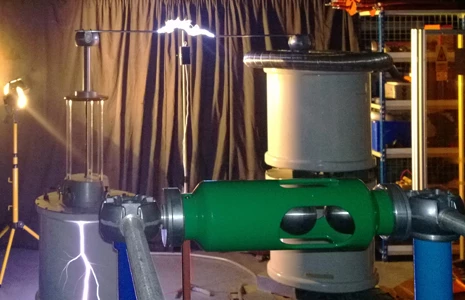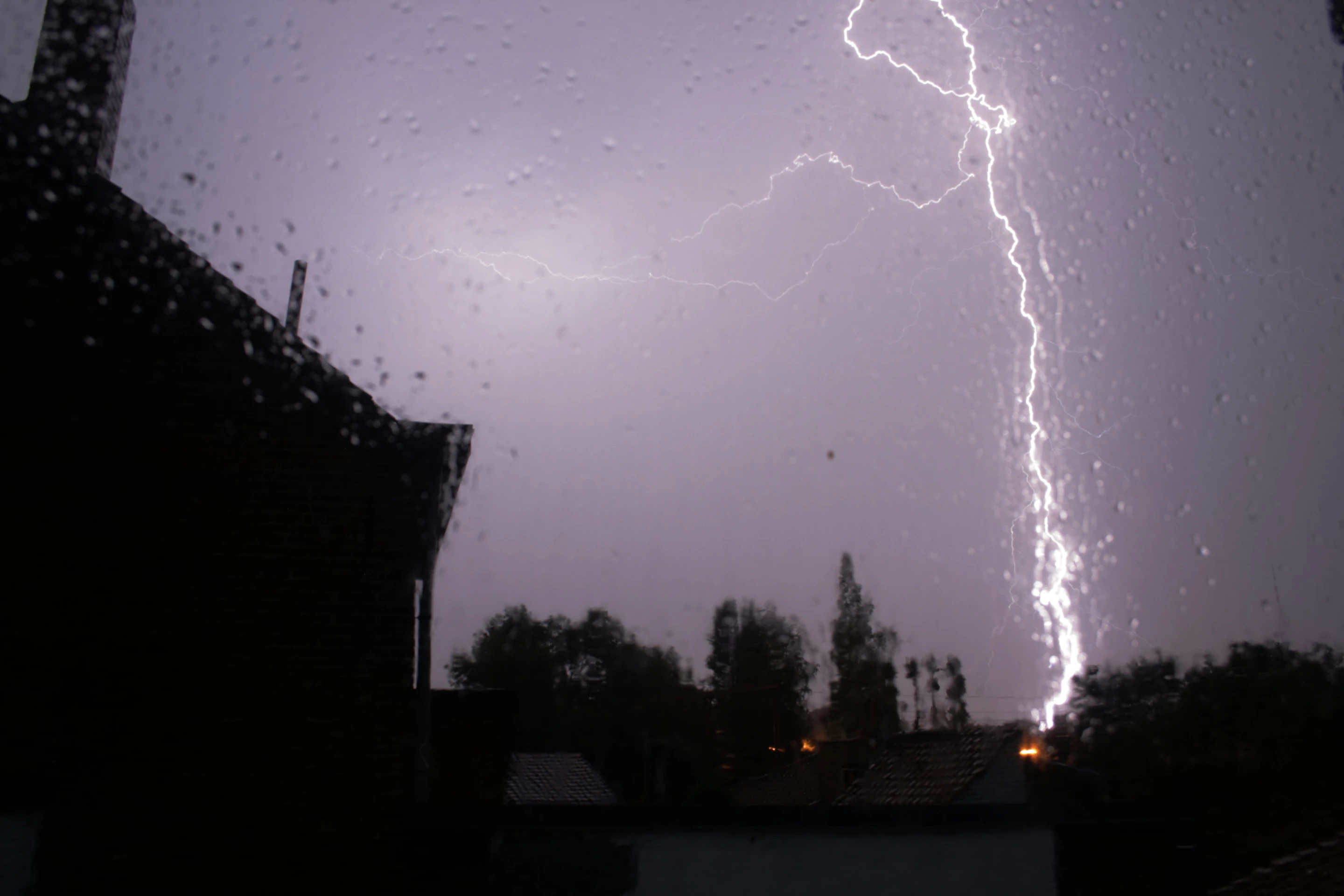In a development that would seem to bring a whole new meaning to the term Lightning charger, Nokia and the University of Southampton claim to have used simulated lightning to charge a Nokia Lumia 925 mobile phone. A University press release states that a 200,000 V was "sent" across a 30 cm gap with the light and heat generated supposedly similar to that of a lightning strike. But is there really any cause for excitement, or are we merely witnessing special effects?
From what can be gleaned from the available information, it appears a transformer was used to step mains electricity up to 200,000 V, causing an electrical arc to span a 30 cm (12 in) gap between two electrodes. The receiving electrode was connected to a second transformer, stepping the voltage back down so as not to fry the phone.
"We were amazed to see that the Nokia circuitry somehow stabilized the noisy signal, allowing the battery to be charged," says the University's Neil Palmer in the press release. "This discovery proves devices can be charged with a current that passes through the air, and is a huge step towards understanding a natural power like lightning and harnessing its energy."
However, watching the accompanying YouTube video, it appears that a constant electrical arc was generated, which would mean that current was constantly flowing to the phone. In a lightning strike, conversely, a massive accumulation of electrical charge is discharged to the ground nearly instantaneously. So is the flow of current constant?
Nokia told Gizmag that it had nothing to add to the information published on its official Nokia Conversations website (which adds very little to the Southampton press release). Neil Palmer confirmed by telephone that a continuous current was indeed flowing. You could say, then, that all that is happening is that the electricity is being routed through a dramatic-looking artificial lightning generator. That may result in a spiky current at the other end, but the second transformer will ensure the voltage is stepped down. However, it is not immediately obvious what possible doors this opens so far as harnessing the power of lightning is concerned, let alone being a "huge step." Palmer tells Gizmag that it was the lack of damage to the phone that was interesting. Asked what we can learn about harnessing energy from lightning, he explained that other experiments were carried out involving the generation of heat, light and sound around the air gap. However, he added that no academic papers were to be produced as a result of the experiment.
"Based on the BBC's coverage, this appears to have very little to do with the atmospheric phenomenon we call lightning," an academic in a related field of study (with no connection to this experiment) told Gizmag.
With the limited information available, it's difficult to find justification for the claim that this is a step towards exploiting the power of lightning. If lessons were learned about the effects of transmission of electricity through air, they haven't been communicated in the press materials. And without an accompanying peer reviewed paper on any aspect of the experiment, our suggestion as things stand is that you don't read very much at all into this one.
You can see the relevant YouTube video and read the source materials for yourself below.
Sources: University of Southampton, Nokia







